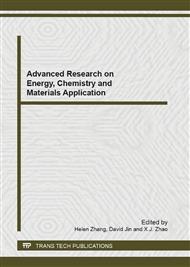p.70
p.74
p.78
p.83
p.88
p.92
p.96
p.100
p.104
Investigation of Well Patterns of Horizontal-Vertical Wells for the Exploitation of Tight Reservoir
Abstract:
In general, the scale of production, exploitation period and the economic benefits of oil and gas field are, to a large extent, depended on the selection, deployment and adjustment of well patterns, especially for tight reservoir. So far, some problems exist in Changqing low permeability oil field, such as the effective displacement system is not easy to be established, a low utilization efficiency of injection water, low oil production and so on. Therefore, five kinds of different well pattern schemes are designed. Then, the well pattern schemes are optimized through numerical simulation method based on the exploitation index including the daily oil output per well, moisture content and oil recovery. Results show that the well patterns of horizontal-vertical wells have better development efficiency than the well patterns of vertical wells. For the optimized well pattern, when the horizontal segment length of horizontal well is 300m, the optimalizing well spacing is 400m and the optimalizing row spacing is 100~150m.
Info:
Periodical:
Pages:
88-91
Citation:
Online since:
November 2013
Authors:
Keywords:
Price:
Сopyright:
© 2014 Trans Tech Publications Ltd. All Rights Reserved
Share:
Citation:


